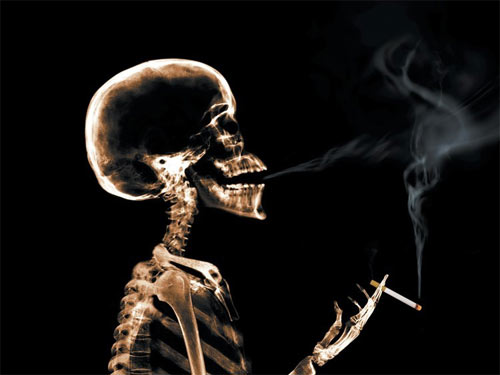I smoke, but I’m not a smoker
While smoking among California adults has dramatically declined in recent decades, researchers at the University of California, San Diego School of Medicine report there is a surprisingly large number of people who say they use cigarettes, but don’t consider themselves to be “smokers.”
Writing in the February 5 online issue of Tobacco Control, Wael K. Al-Delaimy, MD, PhD, professor and chief of the Division of Global Health in the UC San Diego Department of Family and Preventive Medicine, and colleagues estimate that, in 2011, almost 396,000 Californians (12.3 percent of the state’s population of smokers) smoked on a measurable basis, but rejected the characterization of “smoker.”
Almost 22 percent of these smokers consumed tobacco on a daily basis.
Al-Delaimy said the phenomenon has both individual and social ramifications. For individuals, the behavior puts them at many of the same health risks as identified smokers. “There is no safe level of smoking,” he said.
More broadly, non-identification of “non-identifying smokers” or NIS may be negatively impacting efforts to reduce tobacco consumption by overlooking a significant segment of the affected population, the researchers said. This is especially true at the clinical setting where physicians might ask patients if they smoke and patient fail to identify themselves as smokers.
In their cross-sectional analysis of the 2011 California Longitudinal Smokers Survey, Al-Delaimy and colleagues defined NIS as persons who had smoked at least 100 cigarettes in their lifetime, reported smoking at least one day in the past 30 days or who said they smoked at least “some days.” In all cases, when asked if they considered themselves to be a smoker, the respondents replied “No.”
 The researchers believe NIS can generally be divided into two groups with distinct rationalizations for asserting their non-smoker status: According to previous studies, the first group consists of young adults who primarily smoke (and drink) socially and who believe they are not addicted to nicotine. And, for the first time, NIS includes a second group of adults over the age of 45 who were formerly regular smokers and had most likely failed repeated attempts to completely quit. These people, said Al-Delaimy, might seek to avoid the label of “smoker.”
The researchers believe NIS can generally be divided into two groups with distinct rationalizations for asserting their non-smoker status: According to previous studies, the first group consists of young adults who primarily smoke (and drink) socially and who believe they are not addicted to nicotine. And, for the first time, NIS includes a second group of adults over the age of 45 who were formerly regular smokers and had most likely failed repeated attempts to completely quit. These people, said Al-Delaimy, might seek to avoid the label of “smoker.”
“The younger NIS are typically college students who smoke as a means of social facilitation and who believe they can quit at any time,” he said. “Older NIS are likely the result of stigmatization produced by comprehensive tobacco control programs. They’ve become marginalized parts of society who see little advantage in identifying themselves as smokers or providing accurate reports of their smoking behavior.”
Often, the study authors noted, NIS belong to specific ethnic minority groups, notably black and Asian.
 Al-Delaimy said the findings that NIS exist in numbers much greater than previous estimates suggests future surveys should be re-designed to better account for how smokers perceive themselves so that subsequent interventions, media campaigns and public health policies can be refined to more effectively reach smokers who don’t think they’re smokers.
Al-Delaimy said the findings that NIS exist in numbers much greater than previous estimates suggests future surveys should be re-designed to better account for how smokers perceive themselves so that subsequent interventions, media campaigns and public health policies can be refined to more effectively reach smokers who don’t think they’re smokers.
“There is a risk for such smokers to continue to smoke and be adversely impacted by the tobacco they smoke, yet they do not seek any assistance nor do they plan to quit because they falsely believe they are not smokers,” Al-Delaimy said. “This more complex issue of identity and self-perception of smokers in today’s social environment will require further studies and understanding.”
###
Co-authors of this study are Eric C. Leas, Rong W. Zablocki and Steven D. Edland of the UCSD Department of Family and Preventive Medicine.
Funding support came, in part, from the State of California Department of Health Services and the University of California, San Diego.
###
Scott LaFee
slafee@ucsd.edu
619-543-6163
University of California - San Diego